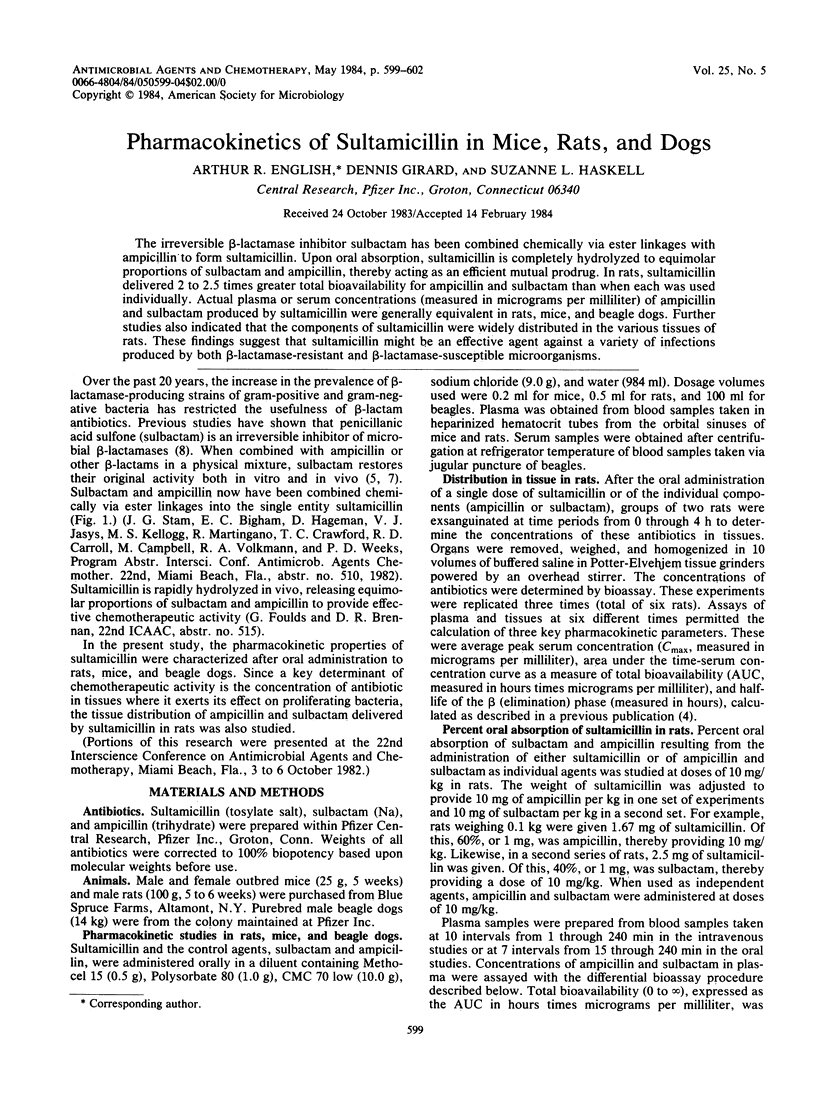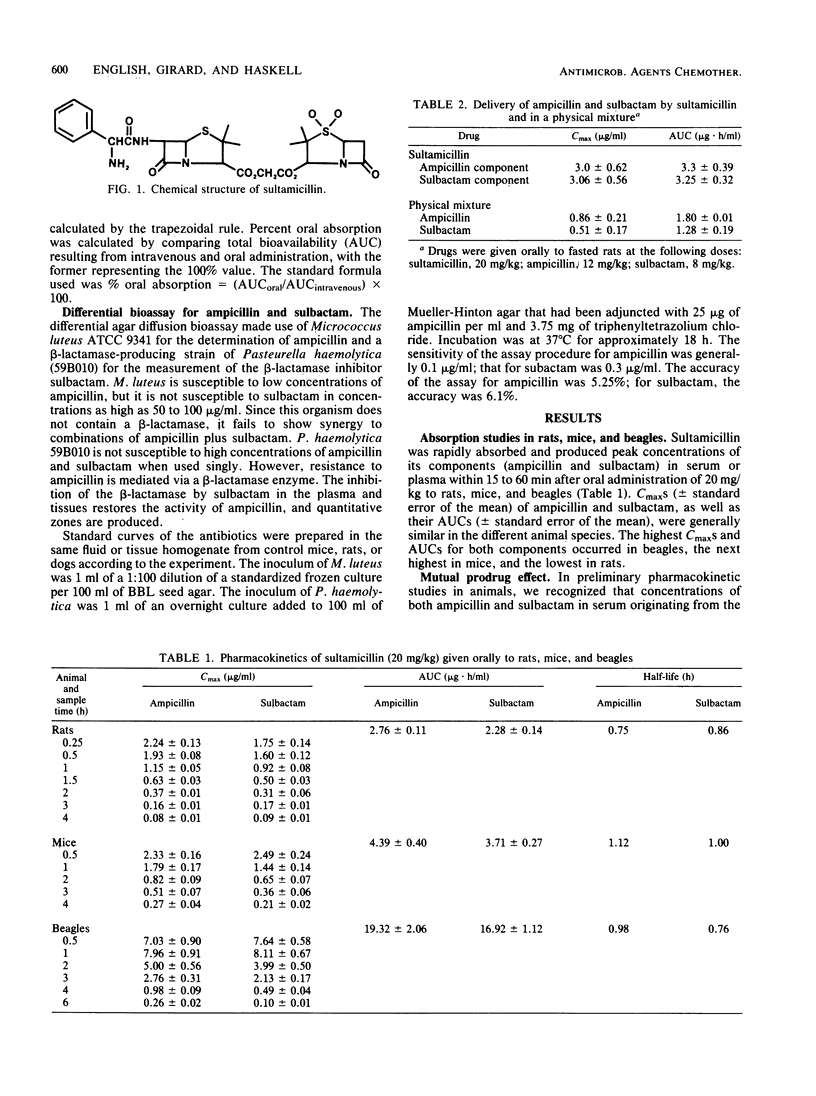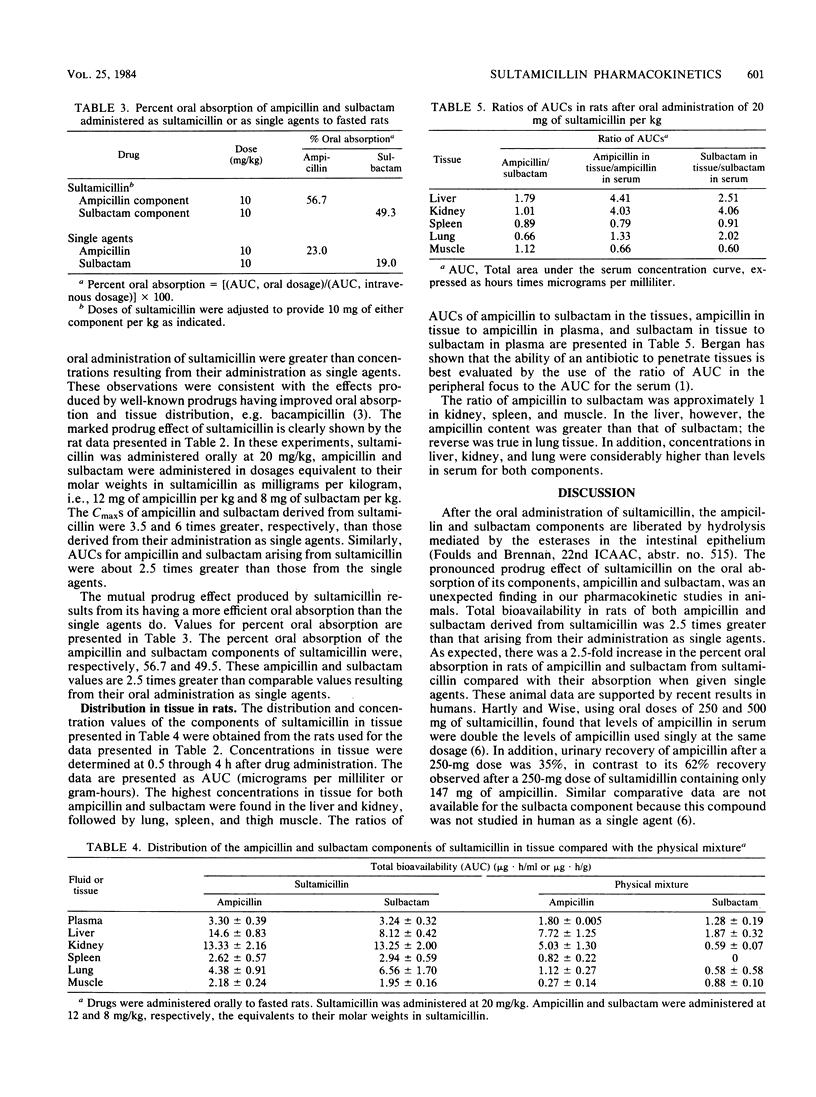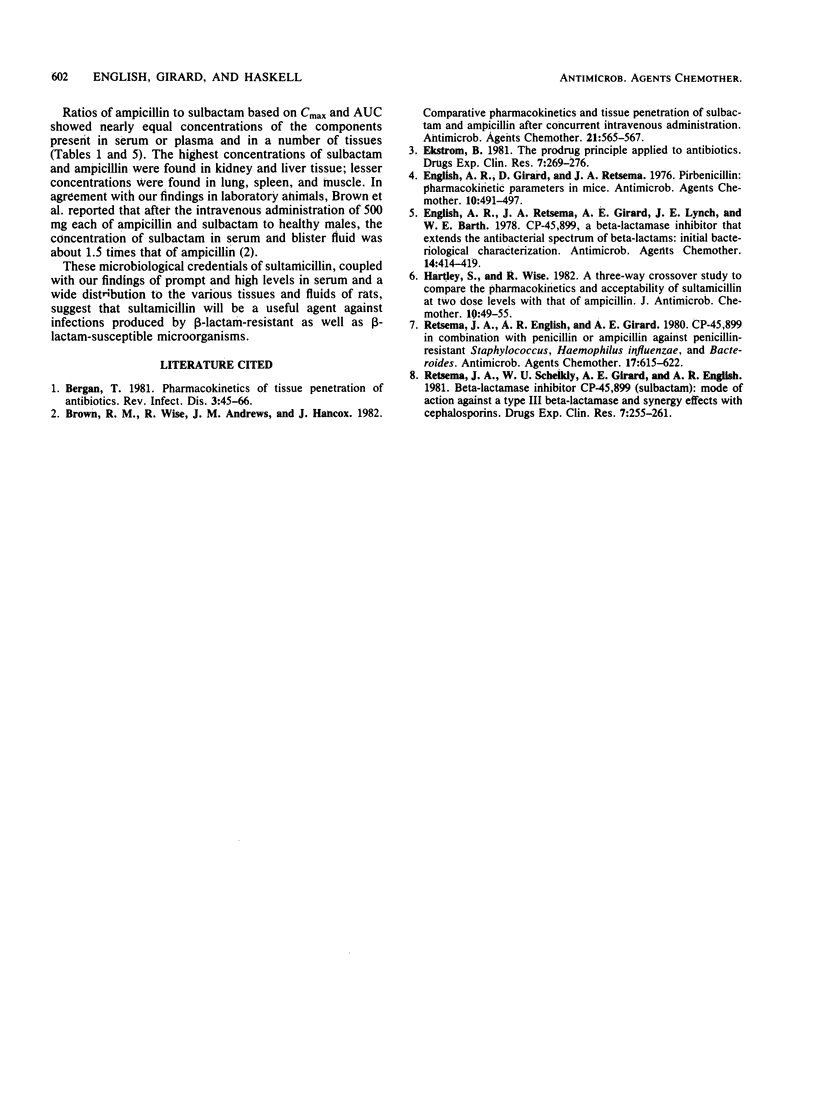Abstract
The irreversible beta-lactamase inhibitor sulbactam has been combined chemically via ester linkages with ampicillin to form sultamicillin . Upon oral absorption, sultamicillin is completely hydrolyzed to equimolar proportions of sulbactam and ampicillin, thereby acting as an efficient mutual prodrug. In rats, sultamicillin delivered 2 to 2.5 times greater total bioavailability for ampicillin and sulbactam than when each was used individually. Actual plasma or serum concentrations (measured in micrograms per milliliter) of ampicillin and sulbactam produced by sultamicillin were generally equivalent in rats, mice, and beagle dogs. Further studies also indicated that the components of sultamicillin were widely distributed in the various tissues of rats. These findings suggest that sultamicillin might be an effective agent against a variety of infections produced by both beta-lactamase-resistant and beta-lactamase-susceptible microorganisms.
Full text
PDF



Selected References
These references are in PubMed. This may not be the complete list of references from this article.
- Bergan T. Pharmacokinetics of tissue penetration of antibiotics. Rev Infect Dis. 1981 Jan-Feb;3(1):45–66. doi: 10.1093/clinids/3.1.45. [DOI] [PubMed] [Google Scholar]
- Brown R. M., Wise R., Andrews J. M., Hancox J. Comparative pharmacokinetics and tissue penetration of sulbactam and ampicillin after concurrent intravenous administration. Antimicrob Agents Chemother. 1982 Apr;21(4):565–567. doi: 10.1128/aac.21.4.565. [DOI] [PMC free article] [PubMed] [Google Scholar]
- English A. R., Girard D., Retsema J. A. Pirbenicillin: pharmacokinetic parameters in mice. Antimicrob Agents Chemother. 1976 Sep;10(3):491–497. doi: 10.1128/aac.10.3.491. [DOI] [PMC free article] [PubMed] [Google Scholar]
- English A. R., Retsema J. A., Girard A. E., Lynch J. E., Barth W. E. CP-45,899, a beta-lactamase inhibitor that extends the antibacterial spectrum of beta-lactams: initial bacteriological characterization. Antimicrob Agents Chemother. 1978 Sep;14(3):414–419. doi: 10.1128/aac.14.3.414. [DOI] [PMC free article] [PubMed] [Google Scholar]
- Hartley S., Wise R. A three-way crossover study to compare the pharmacokinetics and acceptability of sultamicillin at two dose levels with that of ampicillin. J Antimicrob Chemother. 1982 Jul;10(1):49–55. doi: 10.1093/jac/10.1.49. [DOI] [PubMed] [Google Scholar]
- Retsema J. A., English A. R., Girard A. E. CP-45,899 in combination with penicillin or ampicillin against penicillin-resistant Staphylococcus, Haemophilus influenzae, and Bacteroides. Antimicrob Agents Chemother. 1980 Apr;17(4):615–622. doi: 10.1128/aac.17.4.615. [DOI] [PMC free article] [PubMed] [Google Scholar]


